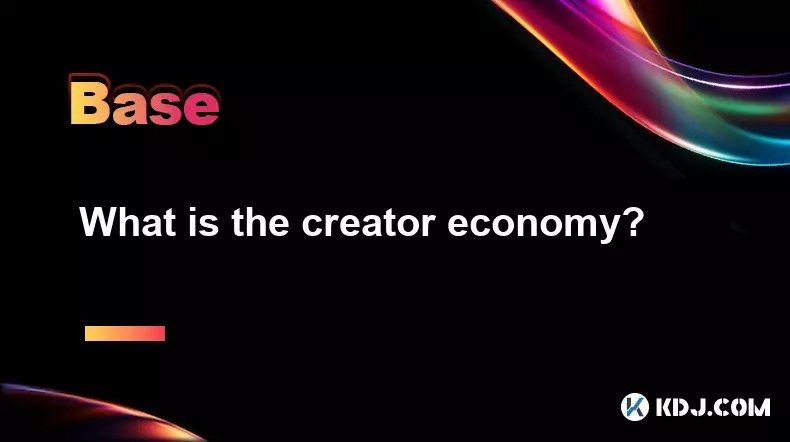-
 bitcoin
bitcoin $115849.501581 USD
-0.20% -
 ethereum
ethereum $4657.446044 USD
-1.30% -
 xrp
xrp $3.094289 USD
-0.74% -
 tether
tether $1.000313 USD
-0.03% -
 solana
solana $243.548889 USD
0.20% -
 bnb
bnb $930.722647 USD
0.20% -
 usd-coin
usd-coin $0.999696 USD
-0.01% -
 dogecoin
dogecoin $0.283551 USD
1.29% -
 tron
tron $0.349632 USD
-0.77% -
 cardano
cardano $0.915982 USD
-1.94% -
 hyperliquid
hyperliquid $54.899464 USD
-0.88% -
 chainlink
chainlink $24.718086 USD
-1.68% -
 ethena-usde
ethena-usde $1.001078 USD
-0.02% -
 sui
sui $3.756062 USD
0.14% -
 stellar
stellar $0.399024 USD
-1.87%
What is AML in crypto?
AML compliance is essential for crypto platforms to combat money laundering, requiring robust KYC, transaction monitoring, and regulatory adherence.
Sep 14, 2025 at 12:54 pm

Understanding AML in the Cryptocurrency Ecosystem
1. Anti-Money Laundering (AML) refers to a set of regulations, laws, and procedures designed to prevent the illegal generation of income through financial systems. In the context of cryptocurrency, AML frameworks are implemented to detect and deter the use of digital assets for money laundering activities. As crypto transactions can be pseudonymous and cross-border, they present unique challenges for financial oversight.
2. Cryptocurrency platforms, especially centralized exchanges, are required to comply with AML regulations established by financial authorities such as the Financial Action Task Force (FATF). These regulations mandate that exchanges perform customer due diligence, monitor transaction patterns, and report suspicious activities. Non-compliance can result in severe penalties, including fines and operational shutdowns.
3. The decentralized nature of many blockchain networks complicates AML enforcement. While public ledgers allow transaction tracing, the lack of identity verification on some platforms enables illicit actors to exploit gaps. Regulators are increasingly pushing for stricter Know Your Customer (KYC) protocols to be integrated into crypto services, ensuring that user identities are verified before trading or transferring assets.
4. Blockchain analytics firms play a crucial role in supporting AML efforts. Companies like Chainalysis and Elliptic provide tools that track fund flows across blockchains, identifying wallets associated with darknet markets, ransomware attacks, or terrorist financing. These insights are shared with law enforcement and regulated institutions to strengthen compliance.
5. AML compliance is no longer optional for crypto businesses operating in regulated jurisdictions. Exchanges must implement real-time monitoring systems, maintain audit trails, and file Suspicious Activity Reports (SARs) when necessary. Failure to adhere can lead to irreversible reputational and financial damage.
Key Components of Crypto AML Programs
1. Customer identification is the foundation of any AML strategy. Crypto platforms collect personal information such as government-issued IDs, proof of address, and biometric data to verify users. This process helps establish a clear link between wallet addresses and real-world identities.
2. Transaction monitoring systems analyze user behavior for red flags, including rapid movement of funds across multiple wallets, transactions just below reporting thresholds, or interactions with known illicit addresses. Automated alerts are triggered when anomalies are detected.
3. Risk-based assessments allow platforms to categorize users according to their potential for money laundering. High-risk users, such as those from sanctioned countries or with large transaction volumes, undergo enhanced due diligence.
4. Ongoing employee training ensures that staff understand evolving AML threats and regulatory expectations. Regular audits and internal reviews help maintain the integrity of compliance programs.
5. Effective AML programs integrate technology, policy, and human oversight. They are dynamic, adapting to new laundering techniques such as mixers, privacy coins, and cross-chain bridges that obscure transaction trails.
Global Regulatory Landscape and Enforcement
1. The FATF's 'Travel Rule' requires virtual asset service providers (VASPs) to share sender and recipient information for transactions above a certain threshold. This rule has prompted global regulatory alignment, though implementation varies by region.
2. Jurisdictions like the United States, European Union, and Singapore have incorporated crypto firms into their existing AML frameworks. The U.S. Financial Crimes Enforcement Network (FinCEN) classifies certain crypto businesses as Money Services Businesses (MSBs), subjecting them to stringent reporting requirements.
3. Countries with lax enforcement have become hotspots for non-compliant exchanges. However, international pressure and coordinated actions, such as joint task forces and asset freezes, are increasing accountability even in less regulated regions.
4. Regulatory sandboxes allow compliant innovation while ensuring AML standards are met. These controlled environments enable startups to test products under supervision, balancing growth with security.
5. Regulators are shifting from reactive to proactive enforcement. Real-time data sharing between exchanges and authorities is becoming standard, reducing the window for illicit actors to exploit vulnerabilities.
Frequently Asked Questions
What triggers an AML alert on a crypto exchange?Large transfers to high-risk jurisdictions, frequent use of tumbling services, or transactions involving blacklisted wallets can trigger automated AML alerts. Sudden changes in user behavior, such as increased trading volume after periods of inactivity, are also monitored.
Are decentralized exchanges (DEXs) subject to AML rules?Currently, most DEXs operate without mandatory KYC, making them less directly regulated. However, regulators are exploring ways to impose obligations on developers, liquidity providers, or frontend operators to ensure compliance.
How do blockchain analytics tools support AML efforts?These tools use clustering algorithms and address labeling to map relationships between wallets. By identifying connections to known criminal entities, they help investigators trace stolen funds and disrupt illicit networks.
Can AML systems distinguish between legitimate privacy use and criminal obfuscation?Advanced systems analyze context, such as transaction frequency, destination addresses, and interaction history. While privacy-focused behaviors aren't inherently illegal, patterns that align with known laundering tactics raise flags for further review.
Disclaimer:info@kdj.com
The information provided is not trading advice. kdj.com does not assume any responsibility for any investments made based on the information provided in this article. Cryptocurrencies are highly volatile and it is highly recommended that you invest with caution after thorough research!
If you believe that the content used on this website infringes your copyright, please contact us immediately (info@kdj.com) and we will delete it promptly.
- Ripple (XRP) Price Surge: Investor Enthusiasm Reaches New Heights
- 2025-09-15 04:10:12
- FTX, Crypto Crash, and Comebacks: The Saga Continues in 2024
- 2025-09-15 03:16:49
- Crypto Presale Mania: Is BFX the Next $1 Token?
- 2025-09-15 03:16:49
- PEPENODE: Crypto Experts Eye Mine-to-Earn Meme Coin for Q4 Gains
- 2025-09-15 03:17:02
- Ethena (ENA): Riding the Waves of Trading Volume and Market Volatility
- 2025-09-15 04:10:12
- Cryptocurrencies Trending: Is Today the Day to Buy?
- 2025-09-15 03:17:02
Related knowledge

What is the creator economy?
Sep 10,2025 at 02:54am
Understanding the Creator Economy in the Digital Age1. The creator economy refers to a digital ecosystem where individuals produce content, build audi...

What is social recovery for wallets?
Sep 09,2025 at 09:54am
Understanding Social Recovery in Cryptocurrency Wallets1. Social recovery is a security mechanism designed to help users regain access to their crypto...

What is a crypto payment gateway?
Sep 14,2025 at 06:36pm
Understanding the Role of a Crypto Payment Gateway1. A crypto payment gateway is a technological solution that enables merchants to accept digital cur...

What is DeFiLlama?
Sep 10,2025 at 09:18am
What Is DeFiLlama and Why It Matters in the Crypto Space1. DeFiLlama is a data analytics platform that focuses on decentralized finance (DeFi) protoco...

What is CoinGecko?
Sep 11,2025 at 06:18am
What is CoinGecko?CoinGecko is a cryptocurrency data aggregator that provides real-time information on digital asset prices, trading volumes, market c...

How is crypto regulated?
Sep 10,2025 at 04:18pm
Understanding the Framework of Crypto Regulation1. Governments and financial authorities around the world have taken varied approaches to regulating c...

What is the creator economy?
Sep 10,2025 at 02:54am
Understanding the Creator Economy in the Digital Age1. The creator economy refers to a digital ecosystem where individuals produce content, build audi...

What is social recovery for wallets?
Sep 09,2025 at 09:54am
Understanding Social Recovery in Cryptocurrency Wallets1. Social recovery is a security mechanism designed to help users regain access to their crypto...

What is a crypto payment gateway?
Sep 14,2025 at 06:36pm
Understanding the Role of a Crypto Payment Gateway1. A crypto payment gateway is a technological solution that enables merchants to accept digital cur...

What is DeFiLlama?
Sep 10,2025 at 09:18am
What Is DeFiLlama and Why It Matters in the Crypto Space1. DeFiLlama is a data analytics platform that focuses on decentralized finance (DeFi) protoco...

What is CoinGecko?
Sep 11,2025 at 06:18am
What is CoinGecko?CoinGecko is a cryptocurrency data aggregator that provides real-time information on digital asset prices, trading volumes, market c...

How is crypto regulated?
Sep 10,2025 at 04:18pm
Understanding the Framework of Crypto Regulation1. Governments and financial authorities around the world have taken varied approaches to regulating c...
See all articles










































































